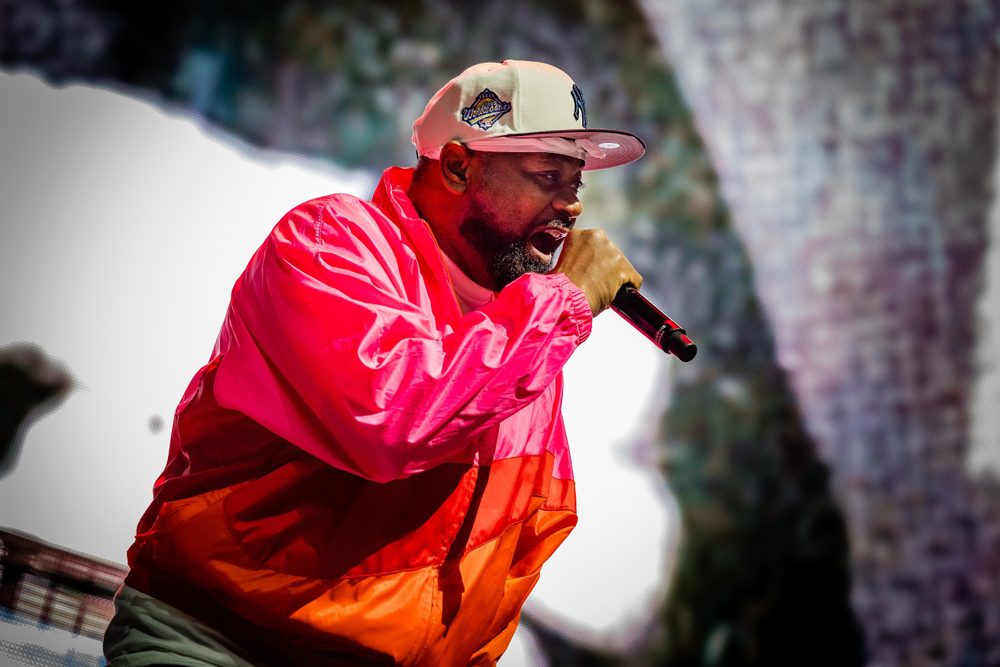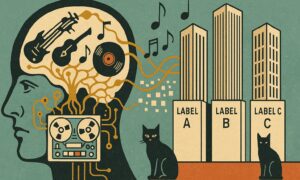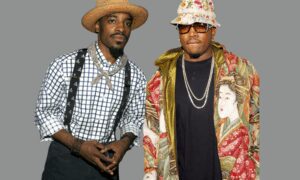
Supreme Clientele: The Abstract Genius of Ghostface Killah
When Ghostface Killah dropped Supreme Clientele on February 8, 2000, he didn’t just release another rap album—he set the gold standard for lyrical innovation, raw storytelling, and high-energy delivery. At a time when hip-hop was veering toward the shiny suits of the Bling Era, Ghostface pulled it back to the dusty loops and cryptic slang that defined classic Wu-Tang. This wasn’t just rap but organized chaos, a surrealist painting in sonic form, a true classic from a Wu-Tang Clan member.
But Supreme Clientele isn’t just an album—it’s a story. A near-death experience, a West African pilgrimage, a legendary producer’s vision, and an industry-shifting impact all played a role in crafting this classic. Let’s break it down.
Ghostface in Africa: The Near-Death Writing Retreat
In the late ‘90s, Ghostface Killah was fighting for his life. Diagnosed with diabetes, his health was spiraling out of control. Seeking clarity, he took a spiritual trip to Benin, West Africa, where he lived in a dirt-floor hut while recovering. It was there, without distractions, without luxury, that much of Supreme Clientele was written. The album was written not on the “New York Times side” like the rest of Wu-Tang’s discography. Read more about “C.R.E.A.M.”
This wasn’t just a vacation—it was a life-or-death pilgrimage. The experience shaped Ghostface’s writing, connecting Black history, pain, and perseverance into his already vivid storytelling. You can hear it in tracks like “Mighty Healthy”, where his cryptic bars take on an almost prophetic quality.
Built for Cuban Linx II? RZA’s Sonic Overhaul
Although Supreme Clientele features beats from various producers (Mathematics, JuJu of The Beatnuts, Carlos Broady), RZA played a crucial role in shaping the album’s final form. He didn’t just contribute beats—he remixed, reworked, and restructured songs to give them a cohesive, cinematic feel.
His production style—layered samples, off-kilter loops, and gritty textures—gave Supreme Clientele its otherworldly atmosphere. Tracks like “Nutmeg” and “Ghost Deini” sound like they came from a lost 1970s Kung Fu flick, reflecting RZA’s deep love for obscure cinema and dusty vinyl.
Ghostface and RZA’s chemistry on this album recalls the magic of Only Built 4 Cuban Linx…, but with a more abstract, fever-dream energy. Learn more about Raekwon’s classic album: Hip-Hop’s Greatest Albums: A Rap Journey
Ghostface vs. The Bling Era: A Victory for the Streets
For an album as dense, experimental, and slang-heavy as Supreme Clientele, its commercial performance was impressive.
- 134,000 copies sold in its first week
- Certified Gold by the RIAA on March 8, 2000
- Helped revitalize Wu-Tang Clan’s dominance after a rocky late ‘90s
(Source: Wikipedia)
At a time when radio-friendly rap was taking over, Ghostface proved that grimy, street-level lyricism could still move units.
10/10: How Supreme Clientele Conquered Hip-Hop’s Elitists
Hip-hop heads immediately recognized the greatness of Supreme Clientele, but even mainstream critics were forced to give Ghost his flowers.
- Pitchfork gave the album a perfect 10/10 rating.
- Rolling Stone ranked it #403 on their 500 Greatest Albums of All Time list in 2020.
- It remains one of the most celebrated Wu-Tang solo albums ever.
Ghostface didn’t just make a great rap album—he made art.
Don’t just read about Supreme Clientele—hear its influence on our station. Hit play now!
The Wu-Tang Family Reunion: Iconic Guest Spots
Wu-Tang albums are rarely solo efforts, and Supreme Clientele brought in a heavy lineup of Wu generals and affiliates:
- Raekwon – The right-hand man, appearing on multiple tracks
- Cappadonna – Bringing his wild, unpredictable flow
- Method Man & Redman – Unleashing verbal chaos on “Buck 50”
- GZA, RZA, Masta Killa – Delivering vintage Wu energy on “Wu Banga 101”
This wasn’t just Ghostface flexing—it was a family affair, proving Wu-Tang was still a force.
Kanye to Roc Marciano: Ghost’s Influence Runs Deep
Supreme Clientele didn’t just define Ghostface’s career—it reshaped hip-hop.
- Kanye West has cited it as one of his biggest influences, particularly for its soul-sample production.
- Just Blaze credits it for inspiring his chipmunk-soul era beats.
- Ghost’s stream-of-consciousness style paved the way for artists like Danny Brown and Roc Marciano.
For an album so unconventional, its influence is everywhere.
No Beats, No Problem: Ghostface’s Jailhouse Writing Style
Some of Supreme Clientele’s verses weren’t written to beats—they were written in jail. Ghostface, dealing with legal troubles, had to write lyrics without hearing instrumentals, leading to a free-form, unpredictable flow that made his rhymes feel like they float over beats rather than stick to them.
This writing process added to the album’s chaotic, otherworldly energy—a style that would become Ghost’s trademark.
Digging in the Crates: Supreme Clientele’s Sample Magic
One of Supreme Clientele’s defining characteristics is its heavy use of soul samples, giving the album its gritty-yet-lush texture. Ghostface and RZA dug deep into funk, soul, and even rock records, crafting a sound that felt both timeless and cinematic.
Here’s a deeper dive into some of the key samples used throughout the album:
Classic Soul & Funk Influences
- James Brown – “Can I Get Some Help” (Sampled on “Apollo Kids””)
- The high-energy horns and funky drums provide the perfect backdrop for Ghost and Raekwon’s rapid-fire verses.
- Solomon Burke – “Cool Breeze” (Sampled on “Saturday Nite””)
- A haunting, melancholic soul groove, looped to create a hypnotic, eerie vibe.
- Lyn Collins – “Ain’t No Sunshine” (Sampled on “Mighty Healthy”)
- A slowed-down, chopped vocal from the James Brown-produced track enhances the song’s prophetic, doom-laden feel.
- The Dramatics – “In the Rain” (Sampled on “Child’s Play”)
- A smooth, sentimental soul sample that perfectly matches Ghost’s nostalgic storytelling about young love.
- The Jackson 5 – “Maybe Tomorrow” (Sampled on “One”)
- The warm, string-laden intro is flipped into a soulful, cinematic beat.
- David Porter – “I’m Afraid the Masquerade is Over” (Sampled on “Malcolm”)
- This same song was famously sampled for The Notorious B.I.G.’s “Who Shot Ya?”, but here, it adds to Ghostface’s social commentary and historical reflections.
- Skull Snaps – “It’s A New Day” (Sampled on “Buck 50”)
- The drum break from this cult-classic funk record provides the foundation for one of the album’s most aggressive cuts.
- Edwin Starr – “I Just Wanna Do My Thing” (Sampled on “Nutmeg”)
- The raw, soulful instrumental gets warped and distorted to match Ghost’s abstract, stream-of-consciousness rhymes.
- Al Green – “Gotta Find a New World” (Sampled on “Stroke of Death”)
- The chopped-up, repetitive loop makes this track one of the most hypnotic and eerie moments on the album.
The Wu-Tang Production Philosophy
Ghostface and RZA, along with Mathematics and other producers, used the classic Wu-Tang sampling technique—taking old, dusty records and flipping them into something entirely new. Rather than just loop famous parts of songs, they distorted, slowed down, and reworked samples to create an unpredictable, dreamlike atmosphere.
The result? A cohesive, cinematic experience that feels like flipping through a crate of forgotten vinyl records—except every track is a banger.
25 Years Later: Why Supreme Clientele Still Reigns
Twenty-five years later, Supreme Clientele still stands as one of hip-hop’s greatest albums. It’s a lyrical labyrinth, a sample-heavy masterclass, and Ghostface Killah’s defining work.
It’s the sound of an artist at his peak, taking life, pain, history, and imagination, and turning it into a timeless piece of art.
Final Thought:
If you haven’t studied Supreme Clientele yet, you haven’t really studied hip-hop.










